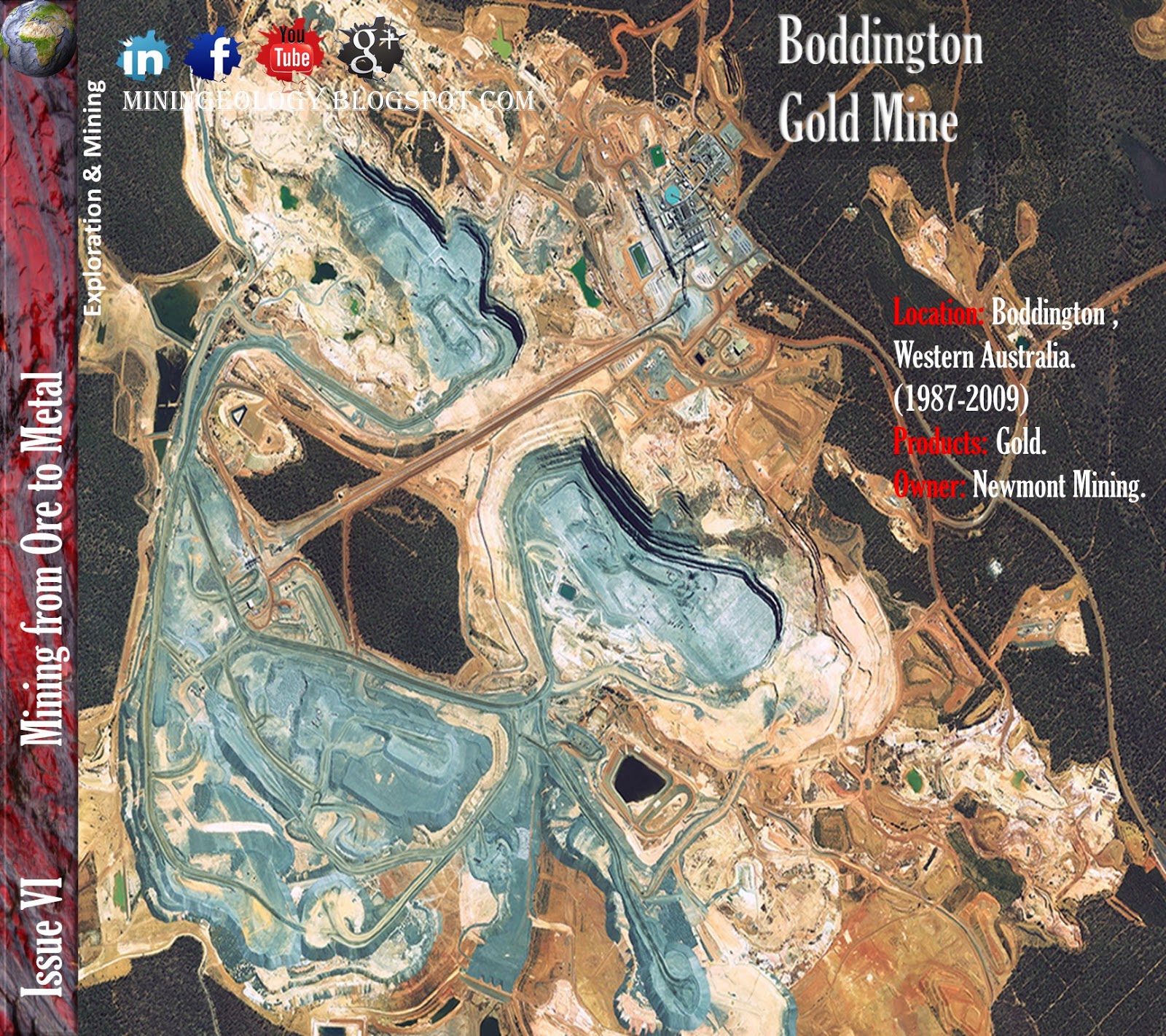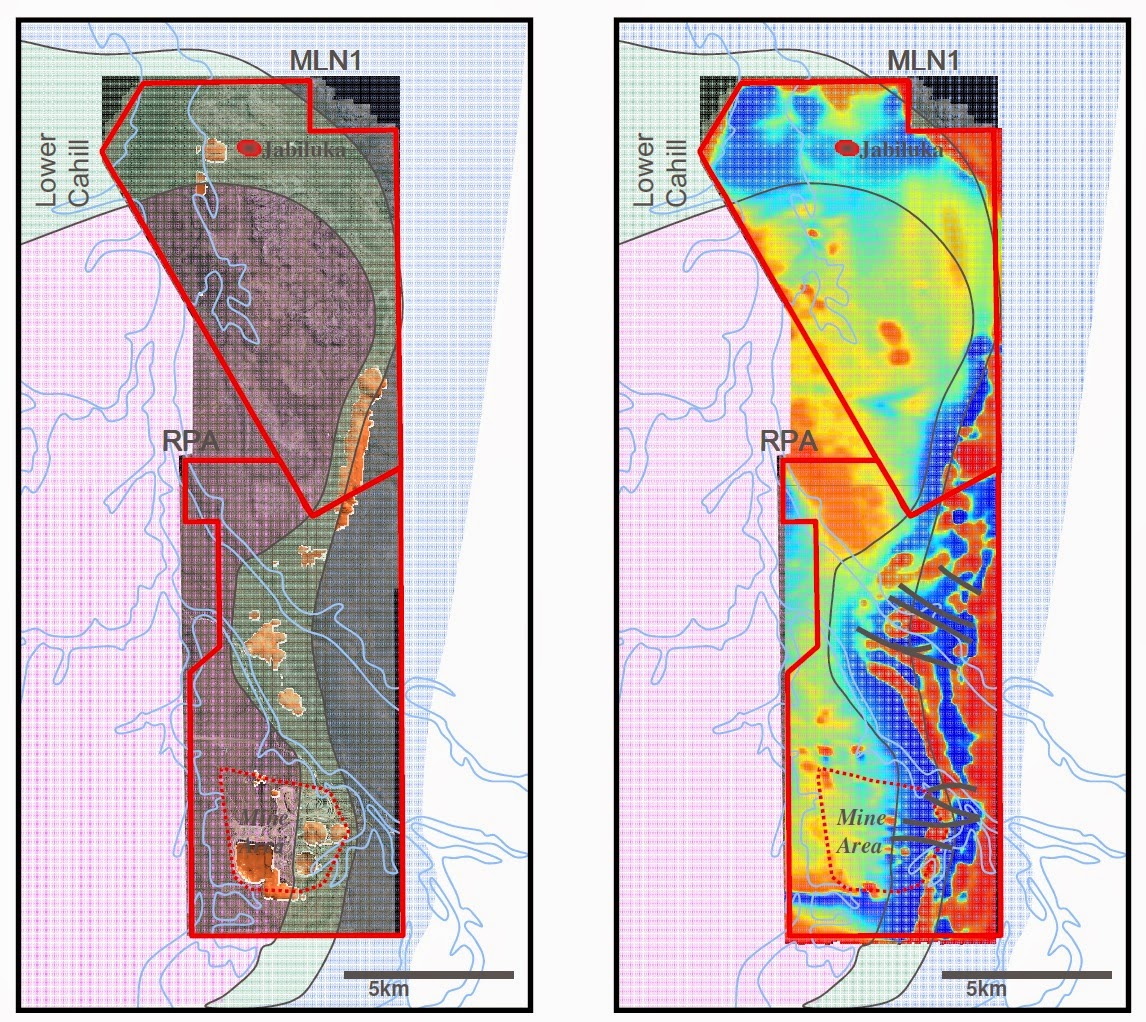Types of Wall Rock Alteration
1. Potassic
alteration
ØPotassic (or
K-silicate) alteration is characterized by
the formation
of new
K-feldspar and/or biotite, usually together with minor sericite, chlorite,
and quartz.
ØAccessory
amounts of magnetite/hematite
and anhydrite may
occur associated
with the potassic
alteration assemblage.
ØIt
typically represents
the highest temperature form of alteration (500–600°C)
associated with
porphyry
Cu-type deposits, forming in the core
of the system and usually within the granite intrusion itself.
ØPyrite
and minor chalcopyrite and molybdenite are
the only ore minerals associated with this alteration.
ØNot
all K-feldspar alteration is characterized by the presence of reddish
colouration.
2. Phyllic
(or sericitic)
alteration
ØThis
alteration style is the most common in a variety of
hydrothermal ore deposits and forms
over a wide temperature range by hydrolysis of feldspars to form sericite
(fine-grained white mica), with minor
associated quartz, chlorite, and
pyrite.
ØPhyllic
alteration is associated with porphyry
Cu deposits, but
also with mesothermal
precious metal ores and volcanogenic massive sulfide deposits
in
felsic rocks.
3. Propylitic alteration
ØPropylitic alteration is probably the most widespread form of alteration.
ØIntermediate argillic alteration affects mainly plagioclase feldspars and is characterized by the formation of clay minerals kaolinite and the smectite group (mainly montmorillonite). It typically forms below about 250°C by H+ metasomatism and occurs on the fringes of porphyry systems.
ØAdvanced argillic alteration is characterized by kaolinite, pyrophyllite, or dickite (depending on the temperature) and alunite together with lesser quartz, topaz, and tourmaline. This type of alteration is characteristic of many epithermal precious metal deposits and a smaller number of mesothermal deposits such as Butte, Montana.
4. Silication
ØSilication is the conversion of a carbonate mineral or rock into a silicate mineral or rock. It is the main process which accompanies the prograde stage in
the formation of polymetallic
skarn
deposits which develop when a fertile, acidic, magmatic fluid infiltrates a
carbonate host rock.
5. Silicification
ØSilicification should not be confused with silication and refers specifically to the
formation of new quartz or amorphous silica
minerals in a rock during alteration.
6. Carbonatization
(Dolomitization)
ØIs
the formation
of carbonate minerals (calcite,
dolomite, magnesite, siderite,etc.) during alteration of a rock. As dolomite in
association with amphibolite, siderite in a
banded
iron-formation, or calcite in a
granitic host.
7. Greisenization
ØA
process of hydrothermal alteration in which feldspar and muscovite are converted
to an
aggregate of quartz, topaz, tourmaline, and lepidolite (i.e.,
greisen) by the action of water vapor containing fluorine. Ref
8. Tourmalinization
ØMedium to high temperature alteration. Associated with many tin and gold deposits. Quartz-sericite-tourmaline veins and alteration common.
9. Hematitization
ØAlteration
that is associated with oxidizing fluids
often results in the formation of minerals
with a high Fe3+/Fe2+ ratio and, in particular, hematite with
associated K-feldspar,
sericite,
chlorite, and epidote.
10. Fenitization
ØA fenite is a quartzofeldspathic rock
that has been altered by alkali metasomatism at
the contact of a carbonatite
intrusive complex. The process is called fenitization. Fenite is
comprised mostly of alkalic
feldspar, with some aegirine,
subordinate alkali-hornblende, and accessory sphene and
apatite.
Chemically, fenites are
Na- and K-rich silicate rocks which develop at the contact between alkaline (carbonatite)
igneous intrusions and their surrounding country rocks.
11. Chloritization
ØChlorite may
result from alteration of mafic minerals or
introduction of Fe and/or Mg. Very common surrounding plumbing of sea-floor
massive sulfides.
ØNot
characterized by any specific mineral assemblage, but
rather a color change between altered and unaltered rock. Generally the result
of oxidation of Fe.
Comments By
Comments By
Alteration is a complex process
of ion exchange whereby some constituents are removed, others are added and
still others are merely redistributed. The physical effects of alteration
include recrystallization, changes in permeability and changes in colour.
Carbonate rocks are
characteristically recrystallized along the borders of a vein or near an
igneous contact. Conversely argillization may reduce permeability of a rock,
leaving the orebody enclosed within a relatively impermeable shell.
Colour changes include bleaching,
darkening and production of aureoles (zones) of various colours. Pastel colours
are especially prominent around certain ore deposits and may form conspicuous
leads to the ore.
Pyrite is a standard alteration
product around sulphide ore deposits (since iron is one of the most abundant
metals in the earth's crust). Pyrite forms whenever sulfur is added to a host
rock containing iron or ferro-magnesian minerals. Pyrite causes a striking
colour change e.g. the pyritization of a red sandstone or shale will produce a
bleached zone due to reduction of iron. Conversely, any pyritized rock is
likely to be made conspicuous at the surface by oxidation of iron which will
produce a red, brown-red or yellow weathered zone.
Unstable (not in equilibrium)
rocks undergo physical and chemical changes (in order to attain equilibrium) in
the presence of early ground preparing hydrothermal fluids of ore solutions.
The alteration may be very subtle
(hydration of ferromagnesian minerals) to very intense (silicification of
limestones).
Indeed replacement ores are
merely commercially valuable products of wallrock alteration.
Wallrock alteration has been
recognized a valuable tool in exploration, because the alteration haloes around
many deposits, are widespread and easier to locate than the orebodies
themselves.
At various distances from a vein,
the conditions of temperature and chemistry are usually different. As a result
of this different types of alteration are likely to be produced simultaneously
at various distances from the vein or fissure. For example, in the outer
fringes of the alteration zone, the ferromagnesians may have been slightly
hydrated while the interior zone was being silicified or sericitized, and the
intermediate zone argillized. The product of this is a zoning of different
alteration products arranged symmetrically around the central vein. In some
deposits this zoning is conspicuous and may be an excellent guide to ore.
TYPES OF WALL-ROCK ALTERATION
Now coming to the exact question
raised, the types are varied and manifold. About 10 types are being named as
under though numerous permutations and combinations often tend to produce mixed
variables. To name the types : Argillic(kaolin+montmorillonite+dickite+pyrophyllite), Potassic(potash
feldspar+biotite), Phyllic(quartz+sericite+pyrite),
Propylitic(chlorite+epidote+calcite), Silicification (quartz+chert),
Dolomitization, Feldspathization, Greissenisation, Fenitizaztion and Bleaching.
Ref: Wallrock Alteration - S.
Farooq, Dept of Geology Aligarh Muslim University, India
www.geol-amu.org/notes/m7-1-8.htm:
Extracted from Google page (Internet Search).




























